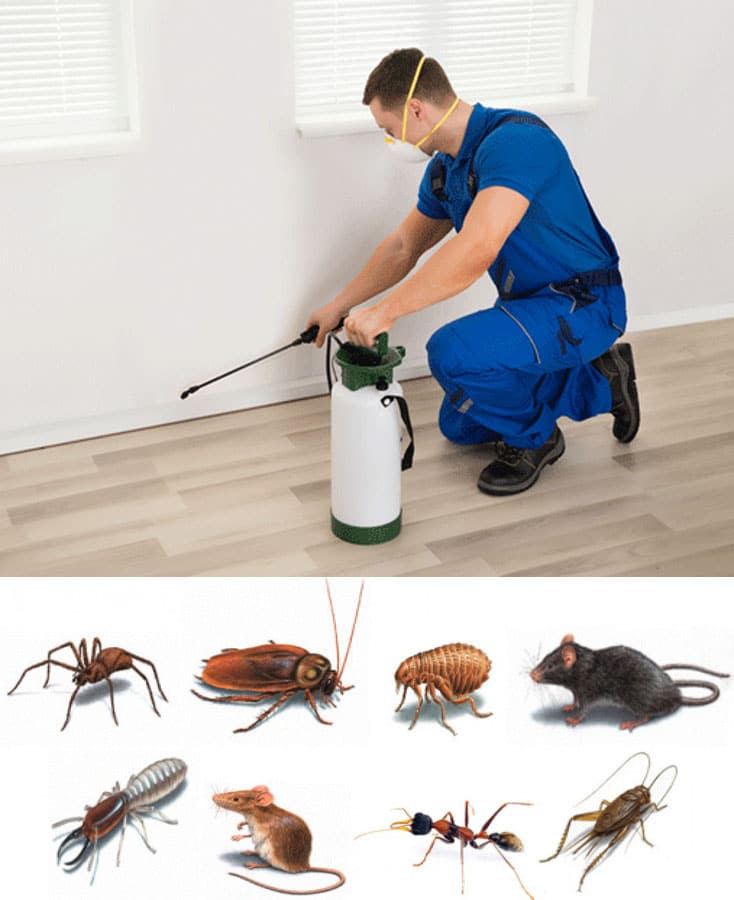A1 Bed Bug Exterminator Charlotte - Reliable and Cost Effective Services
Wiki Article
Bed Insect Treatment Break Down: Comparing Chemical Vs. Non-Chemical Solutions
In the realm of insect control, especially when managing the persistent concern of bed insects, the choice in between chemical and non-chemical therapy options can be an essential one. Both methods provide distinct advantages and disadvantages, affecting aspects such as efficiency, safety factors to consider, and total price. By taking a look at the nuanced details of each technique, a more clear understanding of which path to pursue in attending to a bed pest invasion can be achieved.Performance of Chemical Therapies
Chemical therapies for bed insect problems have actually been extensively recognized for their fast and powerful effectiveness in getting rid of these parasites. When taking into consideration the performance of chemical treatments, it is crucial to recognize that they can offer a comprehensive and quick service to a bed bug problem.Furthermore, chemical treatments have the advantage of using residual effects, suggesting that they can continue to remove bed pests also after the preliminary application. This residual action is especially helpful in combating any possible re-infestations. Furthermore, the rapid action of chemical therapies can bring alleviation to people facing serious bed bug infestations, enabling them to reclaim control of their living rooms swiftly.
Safety Interest In Chemical Solutions
When using chemical solutions for bed bug treatment is guaranteeing the security of passengers and the setting,One important element that requires mindful factor to consider. While chemical treatments can be reliable in eliminating bed pests, they might position dangers otherwise taken care of appropriately. Among the key safety and security interest in chemical solutions is the potential damage they can trigger to human wellness. Exposure to specific chemicals utilized in bed pest treatments can bring about breathing concerns, skin inflammation, or various other adverse responses, specifically in people with pre-existing conditions or level of sensitivities. Additionally, inappropriate application or dosage of chemical pesticides can result in poisonous deposits sticking around in the treated location, presenting lasting wellness threats to residents.In addition, the environmental effect of chemical options is another considerable factor to consider. Some chemicals used in bed insect treatments might be unsafe to helpful insects, wildlife, and ecological communities if they seep into the soil or water systems. It is vital to use chemical therapies deliberately, complying with safety and security guidelines, and thinking about less hazardous options to reduce these threats and ensure the reliable and secure management of bed pest infestations.
Benefits of Non-Chemical Techniques
Considering the prospective safety worries and ecological influence related to chemical solutions for bed pest therapy, checking out non-chemical strategies presents an encouraging choice with numerous distinctive benefits. Non-chemical approaches provide a much safer alternative for households, particularly those with children, pet dogs, or people sensitive to severe chemicals. These strategies eliminate the threats navigate to this site of direct exposure to toxic materials, lowering the potential for negative health impacts. In addition, non-chemical therapies are eco-friendly, as they do not add to air or water contamination, making them a lasting option for bug control.Additionally, non-chemical solutions can be efficient in targeting bed bugs, including hard-to-reach locations where chemical therapies might not penetrate. Approaches such as warmth treatment, vacuuming, heavy steam cleansing, and mattress coverings supply detailed obliteration without using dangerous chemicals. Additionally, non-chemical strategies can be less turbulent, needing marginal prep work and enabling quicker reentry into treated areas. Overall, selecting non-chemical bed pest therapy approaches not just prioritizes safety and security and environmental security however additionally guarantees reliable and comprehensive parasite control.
Limitations of Non-Chemical Treatments

In addition, non-chemical therapies typically call for numerous applications to accomplish successful obliteration. This can be time-consuming and may not always guarantee full elimination of all bed bugs and their eggs, especially in hard-to-reach or concealed locations.
Furthermore, the success of non-chemical therapies heavily depends on proper execution and thoroughness, which can be testing for individuals without expert know-how. Inadequate application of non-chemical techniques may result in insufficient obliteration, resulting in persistent problems and the requirement for extra treatments.
Therefore, while non-chemical therapies have their benefits, it is necessary to acknowledge these Visit This Link restrictions and consider them when establishing the most effective method for managing bed bug invasions.
Price Comparison: Chemical Vs. Non-Chemical Options
Provided the restrictions associated with non-chemical treatments, an essential element to evaluate in the context of bed pest monitoring is the price contrast between chemical and non-chemical alternatives. In comparison, non-chemical therapies like heat therapy or vapor can be much more expensive, with expenses varying from $1,000 to $6,000 for a whole home. While the preliminary expense of chemical treatments may seem lower, multiple treatments may be needed to completely eliminate the invasion, potentially increasing the overall price.Final Thought

Considering the potential security problems and ecological effect linked with chemical services for my link bed pest treatment, discovering non-chemical methods offers an encouraging choice with a number of distinctive benefits.Offered the restrictions linked with non-chemical treatments, a vital aspect to examine in the context of bed insect administration is the expense comparison in between chemical and non-chemical options. In comparison, non-chemical therapies like warmth therapy or heavy steam can be a lot more costly, with prices ranging from $1,000 to $6,000 for a whole home. While the initial expense of chemical therapies might seem reduced, numerous treatments may be needed to totally eradicate the problem, potentially raising the overall expense.In final thought, when contrasting chemical and non-chemical bed insect therapy alternatives, it is important to think about effectiveness, safety and security, advantages, constraints, and expense.
Report this wiki page